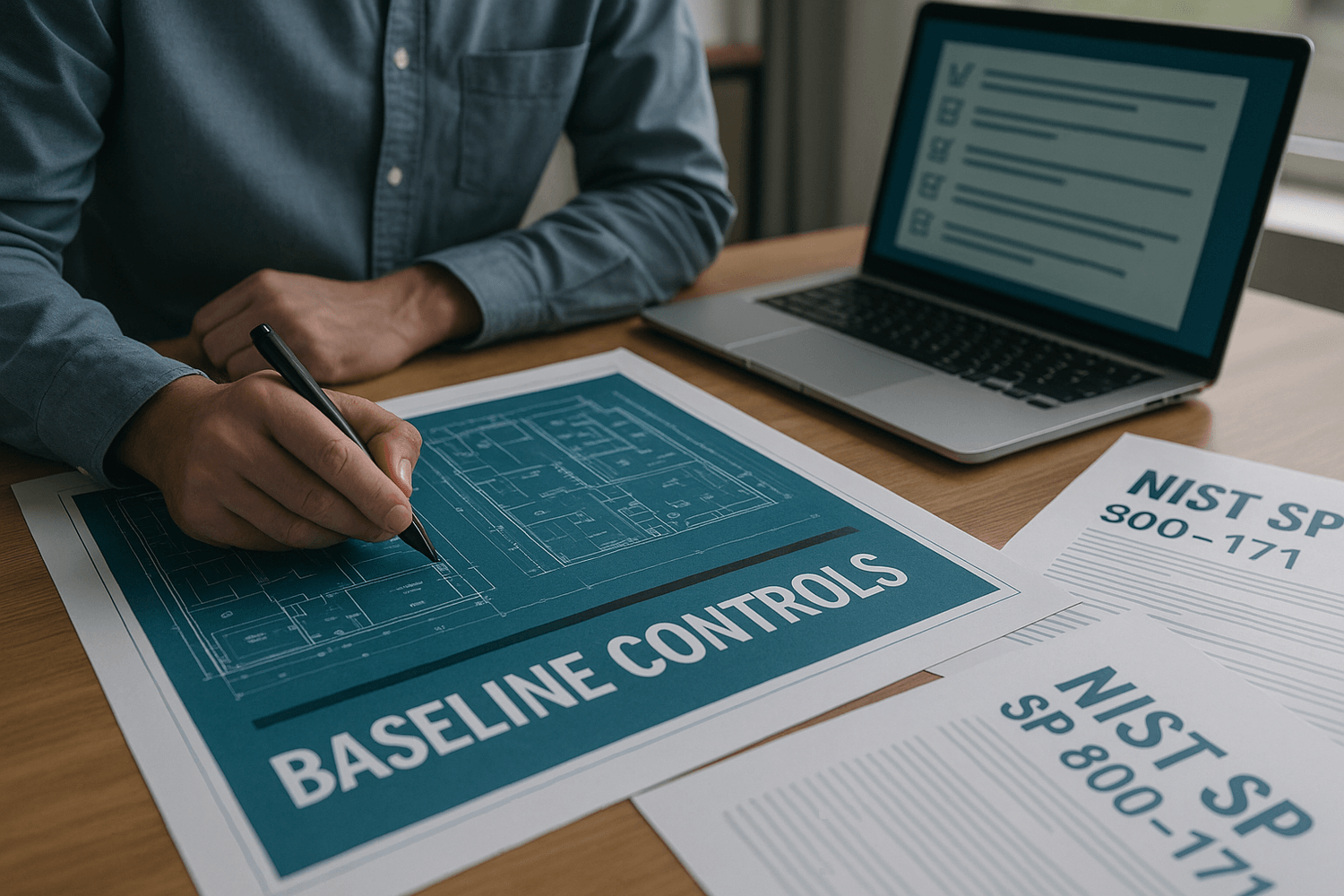CUI 101: Why NIST SP 800‑171 Is the Baseline for Protecting Controlled Unclassified Information
TL;DR
Controlled Unclassified Information (CUI) demands a moderate confidentiality level even outside federal systems. NIST SP 800‑171 distills that mandate into 110 security requirements across 14 control families—forming the baseline every defense contractor must hit. Miss the mark and you risk losing contracts; meet it and you’re poised for CMMC Level 2. ComplAI accelerates the journey by translating each requirement into actionable tasks, auto‑generating policy drafts, and tracking progress in a live dashboard—so you spend less time decoding NIST jargon and more time winning work.
Why CUI Suddenly Matters to Defense Contractors
The Pentagon’s supply chain leaks at its weakest links: small and midsize subcontractors. To plug that hole, the government created the CUI Program and pushed responsibility down the chain. Under DFARS 252.204‑7012 (and an imminent FAR clause), contractors must implement NIST SP 800‑171 whenever they process, store, or transmit CUI. The consequences for non‑compliance include bid disqualification and contract suspension.
What Counts as CUI, Really?
CUI is any federal information that isn’t classified yet still demands protection—technical drawings, export‑controlled data, troop schedules, and more. By policy, its confidentiality impact can be no lower than “moderate.” That single word drives every safeguard you must implement.r
Inside NIST SP 800‑171: 14 Families, 110 Requirements
NIST organized the safeguards into 14 logical control families, covering everything from Access Control to System & Information Integrity. Each family contains basic and derived requirements distilled from NIST 800‑53. Together, they create a right‑sized checklist small businesses can realistically implement while meeting federal expectations.
Why SP 800‑171 Is Called a “Baseline”
“Baseline” means minimum. You can build higher walls, but you can’t go lower without a formal waiver. Because the controls strip out agency‑specific bureaucracy, they dovetail neatly into CMMC Level 2—making SP 800‑171 the fastest route to future DoD certification.

The Practical Workflow: SSP, POA&M, and Continuous Improvement
Scoping – Identify every component that touches CUI.
Gap Analysis – Map current practices to the 110 requirements.
Remediation – Close gaps and document residual risk.
Assessment – Use NIST 800‑171A or a C3PAO for third‑party validation.
Continuous Monitoring – Reassess yearly or whenever your environment changes.
Where Contractors Struggle—and How ComplAI Helps
An Ohio-based CNC shop with roughly 60 endpoints had nine months to nail Level 2 certification. A traditional consultant quoted about $180 k for the full journey. By switching to a TryComplai-first workflow, the team slashed nearly forty percent of that spend. Here’s the cost story, line by line:
Decoding Requirements – ComplAI’s AI Policy Generator converts each control into plain‑English tasks and editable policy stubs.
Keeping Score – Live dashboards replace stale spreadsheets, flagging controls that drift out of compliance.
Proving Effort – ComplAI links each implemented control to evidence artifacts and packages assessment‑ready reports.
Staying Ready for CMMC – Because SP 800‑171 maps almost one‑to‑one with CMMC Level 2, using ComplAI today smooths tomorrow’s audit.

Five Key Questions Contractors Ask
Yes. If your clause says you may handle CUI, you must be ready on Day 1.
For a 100‑person shop starting from scratch, 4–6 months is realistic. ComplAI’s automation can cut that to days not months.
Today, maybe. Once CMMC rule‑making finalizes, expect third‑party assessment for Level 2. Doing SP 800‑171 right now means fewer surprises later.
Anywhere secure you can produce on demand. ComplAI references them but doesn’t host them
NIST allows "alternative, but equally effective" measures. Document the rationale in your SSP and be ready to defend it.
The Final Word
NIST SP 800‑171 isn’t optional—it’s the price of admission to the defense supply chain. Its 110 requirements give contractors a clear path to protect CUI at the mandated moderate level while positioning them for CMMC. ComplAI automates policy generation, real‑time control tracking, and auditor‑friendly reporting, so even resource‑strapped teams can achieve and maintain compliance. Ready to level up? Map your first control family in ComplAI and watch compliance work finally move at mission speed.

POPULAR POSTS

by Mike Hayles- July 5th, 2025
By Mike Hayles on June 26th, 2025
By Mike Hayles on June 28th 2025
NEWSLETTER
Subscribe to our mailing list to get the new updates.






